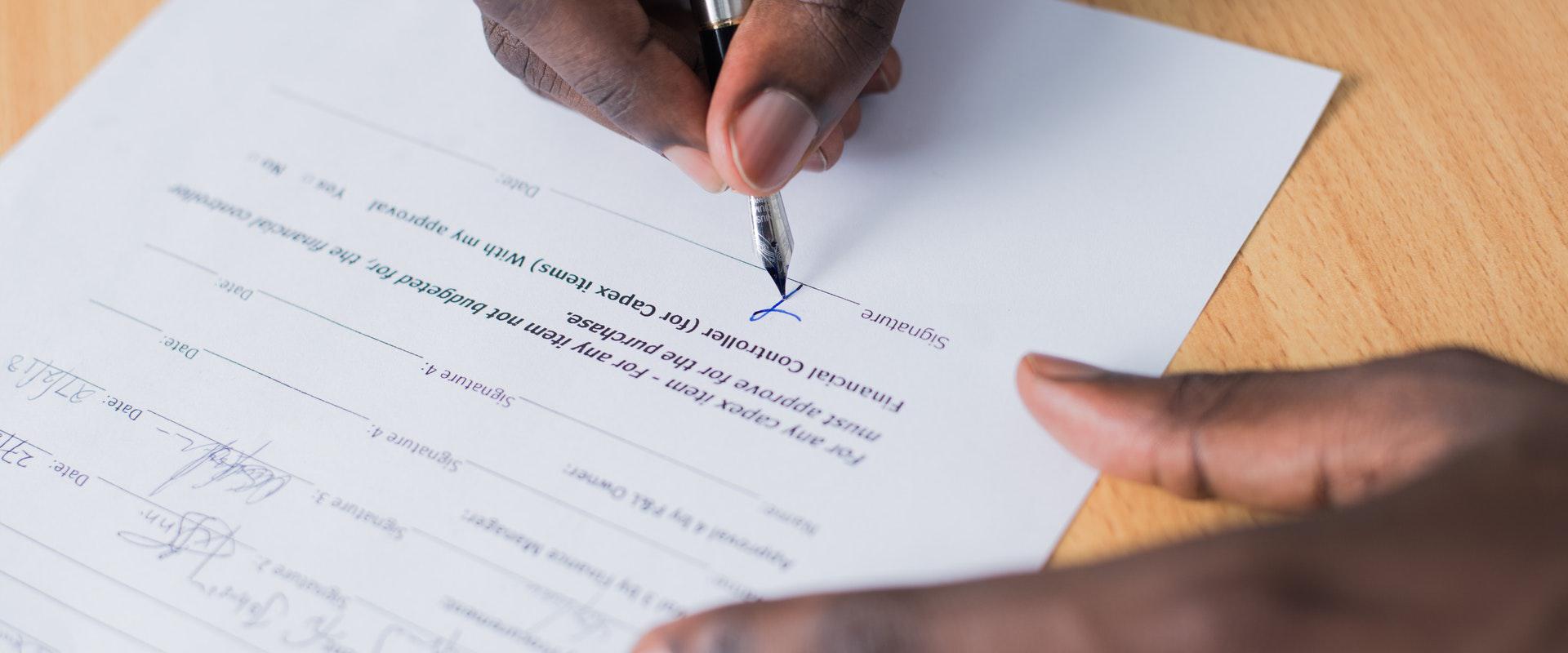Stumped for ideas on how to make a unique signature? We’re here to help! Several qualities—including style and creativity—make signatures worthy of admiration, but that doesn’t necessarily make them easy to write or replicate for digital use. Let us help you with some signature ideas.
We agree with many online articles stressing that signatures, like handwriting, should be distinctive and unforgettable. We also recommend that signatures be elaborate yet simple enough to be completed within a few seconds.
Here’s our complete guide to making distinctive signatures, whether you need them for legal documents, emails, or official communication. As a bonus, we’ve also shared suggestions on creating and using digital signatures.
What Should My Signature Look Like? Signature Ideas
Since there are no rigid rules regarding signatures, we recommend reflecting on the following:
- Consider your handwriting (cursive or print), and look at other famous signatures to get some inspiration.
- You can use letters to make a graphic impact by emphasizing the first letter, using lowercase letters, or adding a cursive twist to letters like s, y, j, and g.
- Don’t forget to vary the spacing of your letters—too closely placed or overlapping letters and design elements can make signatures illegible.
You can also create multiple signatures, depending on how and where you wish to use them.
Not familiar with the different types of signatures? Here’s a quick look at several generally acceptable signatures, such as wet signatures, digital signatures, electronic signatures, and email signatures.
The Wet Signature
A signature is deemed wet when done by hand using a pen and ink. It is considered a legal signature in a document. Since you’ll use this signature to sign documents, it should be clear and distinctively yours.
The Legal Signature
A legal signature includes all wet signatures, even electronic and digital signatures, as long as they meet the standards of the ESIGN Act.
The Digital Signature
A digital signature is a digital copy of a legal signature—whether scanned, copied, or captured using a digital pen or stylus. Unlike electronic signatures, digital signatures include an attached code that ensures authenticity. These codes include an IP address and timestamp. If either of these elements is absent, the signature’s authenticity decreases.
Digital signatures should be certified before being used in digital documents. Creating and authenticating a digital signature requires tags such as when it was created and who certified it. This information should also be clear when placed in legal documents. A digital signature uses the PKI (Public Key Infrastructure) format, which uses a key or a tag confirming that the signer placed it. This is one way to ensure the authenticity of a signature. However, the app or software using the PKI needs to meet the requirements of a Certified Authority (CA), which then certifies that the digital signature is authentic and can be legally used and accepted in the signed document.
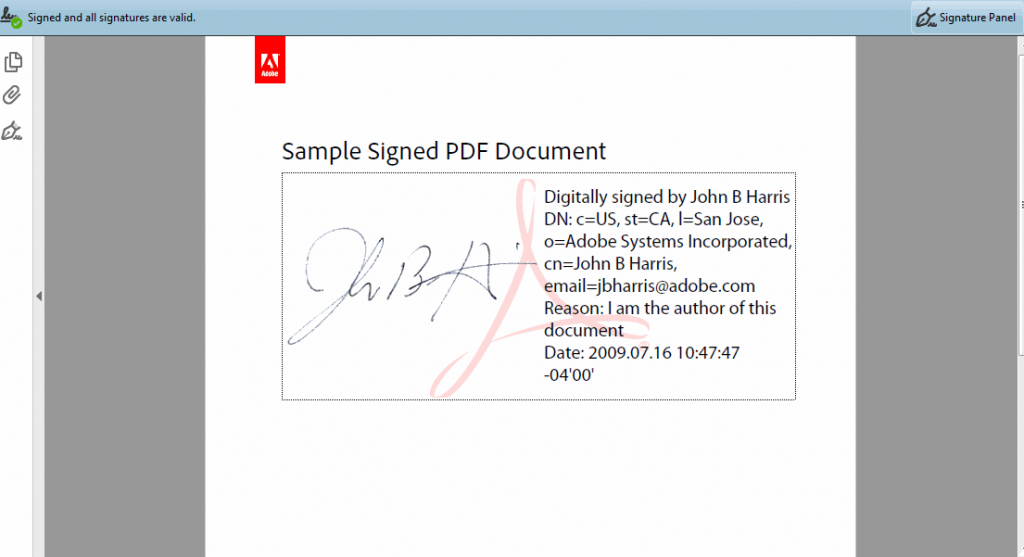
From: https://stackoverflow.com/questions/45303838/tcpdf-digital-signature-not-visible-in-adobe-viewer
The Electronic Signature
An electronic signature can include digitally drawn signatures or a scanned signature. E-commerce sites like Amazon use electronic signatures to acknowledge a recipient’s acceptance of delivery.
Electronic signatures are different from digital signatures, as they’re scanned or captured images. Using a digital pen or signing on a screen allows you to add your unique signature ideas and customize your signature. It also qualifies as an electronic signature since it is not authenticated.
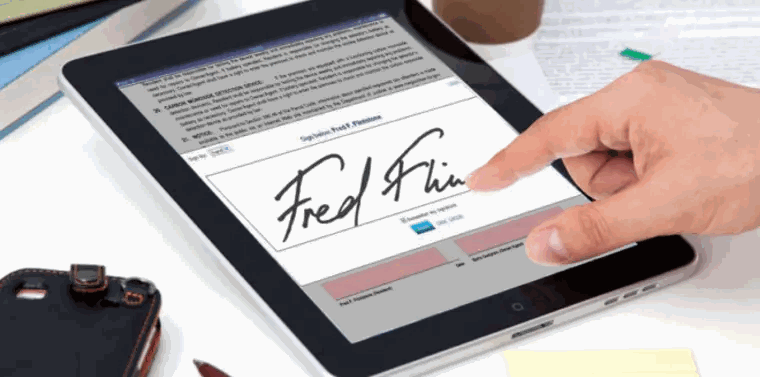
Email Signature
Email signatures are often used in a business context. They involve adding information about the sender, automatically appearing at the bottom of each email. Email signatures usually include the sender’s full name, title and position, contact information, photographic images, a virtual business card, and the company logo. Email signatures are not used to certify documents; however, when used consistently in business communication sent to partners and clients, they can act as a record of your correspondence. (The equivalent for a text message would be a text signature.)

From: https://www.hubspot.com/email-signature-generator
To make sure your email signatures stand out, you can use email signature tools to customize free email signature templates for personal and corporate use.
How to Create Your Own Signature
Creating your signature needs some reflection, whether it’s an email signature or a wet signature. Consider what you like about your handwriting and the unique qualities of your name, especially the letters that you could use for dramatic flair and design. Here are some basic steps to creating a distinctive signature that reflects you.
1. Consider What You Want to Say With Your Signature
Think about what kind of impression you want your signature to make. Perhaps you want to convey clarity and simplicity, so you should make your signature legible and easy to understand.
When it comes to email signatures, you want to indicate your approachability, designation, and contact information to the recipients. Including your signed name in your electronic email signature can give it a more personal touch.
2. Decide Which Parts of Your Name to Include
Consider which part (or parts) of your name you could accentuate to make your signature distinctively yours. You could make your initials stand out as part of your complete signature or use your initials alone. If you go by your last name, you may want to emphasize it in your signature. An email signature allows for both a typed name and a personalized signature.
3. Focus on Certain Letters for Emphasis
You could capitalize your initials and make the rest smaller to give it a bold appearance. If your initials are clear, you can make the rest of your name a scrawl to give it a graphic appeal.
4. Add Some Flair to Your Signature
Use an underline or a point to give your signature some flair, but avoid hearts, stars, or other shapes. Consider using letters like g, j, y, and s in a creative way to add a twist to a fancy signature.
5. Practice Writing Your Signature Until It Feels Natural
Make your signature simple and identifiable. It should be easy to sign in seconds but still identifiable as yours. The key is to practice writing your signature until you can consistently replicate the unique elements that make it yours.
Create a Signature That Stands Out With These Unique Signature Ideas
Signatures can be as attractive as any graphic design, especially if you add unique elements. If you’re looking for ways to make your signature unique, consider the following:
Tips for Creating a Unique Signature
Here are some tips for adding creativity and style to your signature. Using these tips, you can turn your signature into something that projects an image and indicates your unique personality.
1. Give Your Signature a Slant Toward the End
An upward slant makes a short signature appear longer. Some say an upward slant also indicates a positive outlook.
2. Use Your Initial Letters as Points of Emphasis
Capitalize your initials and give them broader strokes to add emphasis and increase legibility.
3. Use an Underline as a Stylish Addition
Add an underline if you want your signature to look appealing but still professional. Experts say that an underline indicates decisiveness.
4. Use a Writing Font Style That Is Natural to You
If you use cursive writing, use it to stylize your initials. Since letters like g, j, f, and s can lend visual uniqueness when written in cursive, these can add small flourishes, such as loops, twists, and dashes to your signature.
Font style also comes into play when choosing the text of your email signature. Choose one that is professional and readable.
5. Add Design Elements That Suit Your Background
If your background, occupation, and interests are vital to your personality, you might want to reflect them in your signature.
Some movie stars, celebrities, and artists use signatures with unique design elements that reflect their passion. Their signatures can even become symbols used as marketing or fundraising tools. However, using autographs to make some money does not always work, so consider the instance and circumstance for which you will use your design.
Signature Examples
Whether you want a corporate email signature for official communications, a legal signature that is distinctly yours, or a simple handwritten note for a loved one, there are numerous examples from which you can draw inspiration.
Here are some signature style examples to spur your creativity:
Clear and Readable Signature
Perhaps the most famous signature in American history is John Hancock’s prominent and identifiable signature in the American Declaration of Independence. It’s almost as if his signature has become more famous than his deeds during the American Revolution. It’s the perfect example of a clear, legible signature that is uniquely identifiable.
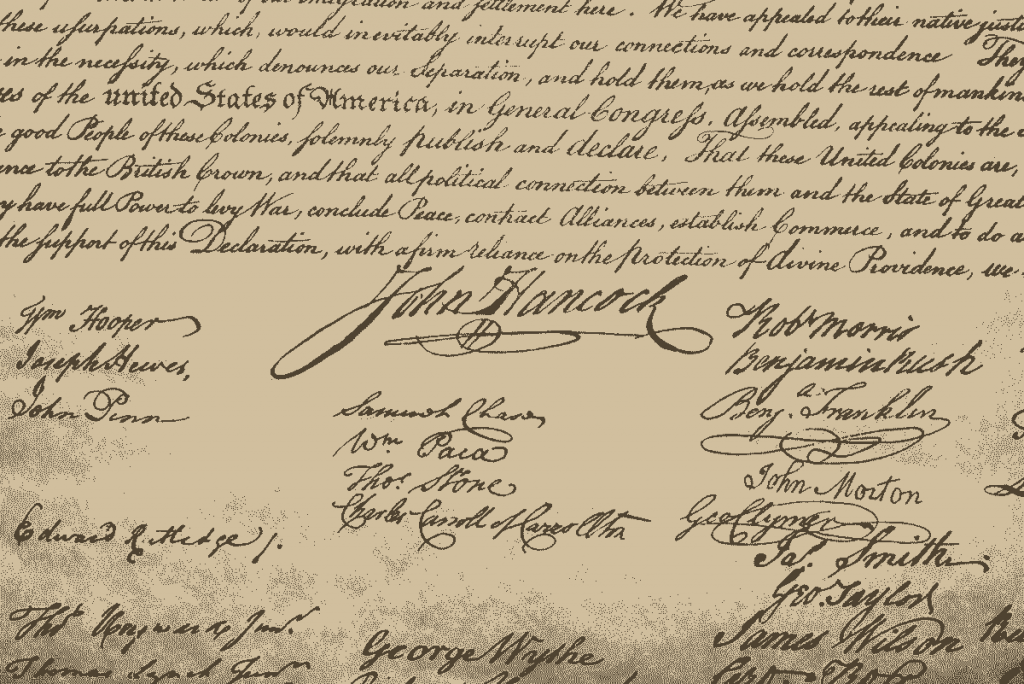
From: https://www.theconstitutional.com/blog/2020/03/03/john-hancock-one-americas-founding-fathers
Another example of a clear and readable signature is that of Bill Gates. His signature is simply written, with a strong line on the “t” that shows determination, balance, and modesty. The first letters of the last and first names are also separated from the other letters, indicating independence.
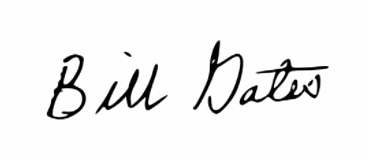
From: https://signaturely.com/online-signature/
Using Initials or a Single Name
Pablo Picasso is a famous example of a signature that uses a single name. The famous painter created a signature with a strong graphic element, reflecting his creativity, genius, and self-confidence. Using only his last name along with the underline shows strong character.
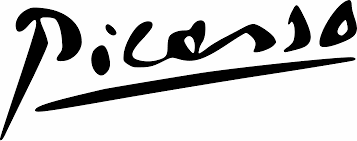
From: https://commons.wikimedia.org/wiki/File:Picasso_signature.svg
Another example of independence and quirkiness is the signature of Apple’s Steve Wozniak. He uses a shorter form of his last name and includes a loop and slant that indicate a positive nature.
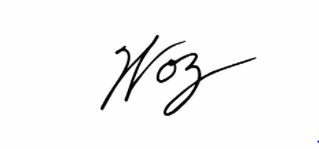
From: https://signaturely.com/online-signature/
Straight Signature With Emphasized Initials
Some people use the first letters of each name for emphasis, such as Virgin’s Richard Branson. The initials are clear, but the rest of his name is illegible, making it more unique and harder to forge. His signature has no slant, which indicates a calm and cool nature that doesn’t buckle easily under pressure.
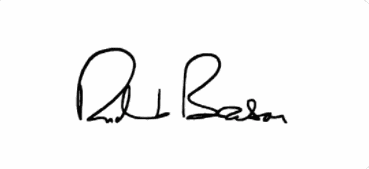
From: https://signaturely.com/online-signature/
Here’s another fantastic example of a straight signature. Former President Barack Obama emphasizes the B and O. Not only are they larger than the other letters, but the O is also stylized. The free spaces within B and O indicate openness, while the straight signature reflects a cool and calm nature.
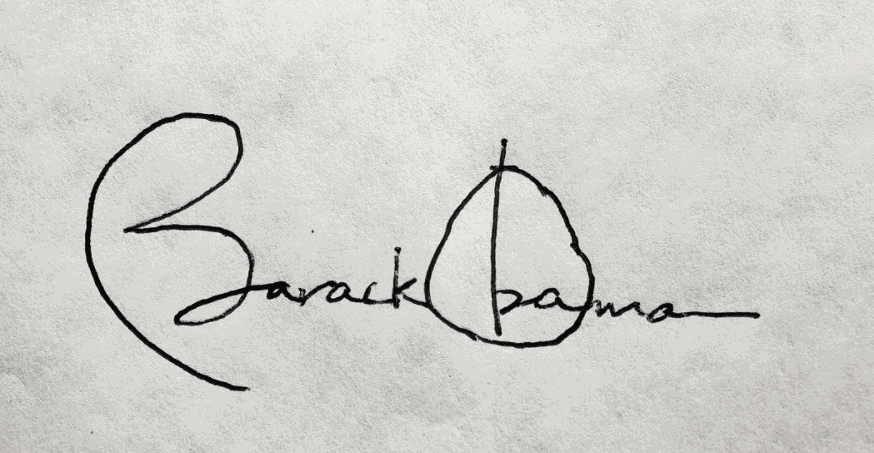
From: https://commons.wikimedia.org/wiki/File:Obama_healthcare_signature.jpg
Get Started With an Online Signature Maker
If you want your electronic signature to capture the unique qualities of your original signature, you could search for an online signature maker. These apps are an ideal tool to help you customize and create signatures for all purposes, whether you want to sign your digital documents or simply send an email with a more personal touch.
Signaturely is the latest and one of the best online signature maker apps. It can help you create the kind of electronic signature that captures your character, background, and experience. Unlike other signature makers, Signaturely is free and allows users to add graphic design elements that make their signature unique.
There’s no need to worry about authentication since your Signaturely creation is just as valid as your wet signature.
The process is easy—go to Signaturely’s website from your computer, tablet, or mobile device and sign up for a free account. You can write your signature with your mouse, finger, or stylus pen, type your name, and choose a font that suits you. Once you’ve created a signature, you can download and use it to sign all your documents.
Signaturely can also help companies manage their workflow by streamlining digital documentation and linking all relevant communication. Signaturely’s e-signatures are considered legal and acceptable across all industries, and their service is free, so you don’t need to worry about additional costs.
Frequently Asked Questions About Signature Ideas
Do you still have questions about signatures? Take a look at our FAQ section for more guidance!
Yes, you can use your initials for your signature. They make your signature distinct and quicker to write. However, you should ensure that you have official documents, such as licenses and contracts, recording the use of your initials as your signature.
Since a signature is a mark that indicates consent, you can legally use a smiley face as your signature. However, the signature should be unique to the person, and a smiley face may be hard to prove as “uniquely yours.” Additionally, use such a basic symbol. Fraudsters will have no problem forging a document in your name—this is why many people try to make their signatures unique.
Signaturely is a great source for signature ideas. It applies signature and handwriting analysis that will match design concepts with your personality and style. It also gives you two options to create your signature: you can write it manually via touchscreen or mouse or use a keyboard to type your name and then choose a font style that works for you.
A typed name is not considered a legal signature unless the owner uses it as a digital signature that meets the requirements under the ESIGN Act of 2000. Legal signatures under the act must have attributes such as timestamps, IP addresses, and encrypted signature protection in the document. Even if you use a typed name as a signature, it’s still legal as long as it meets these requirements.
Remember This About Signature Ideas
You can create a unique signature that reflects your character, personal writing style, preferences, and background. You can keep your signature’s authenticity even while signing documents online. Signaturely is an innovative software that helps you create a customized, highly personal electronic signature that’s legal, special, and yours for life.
